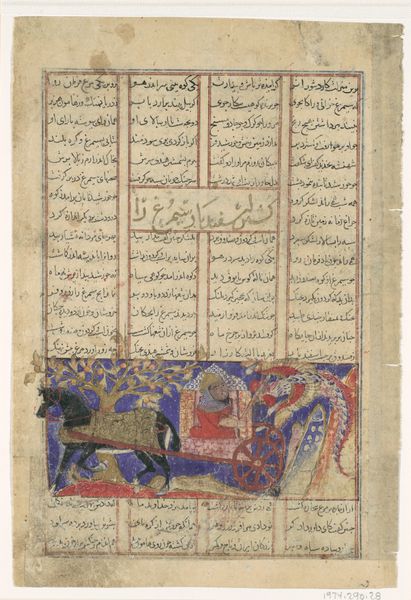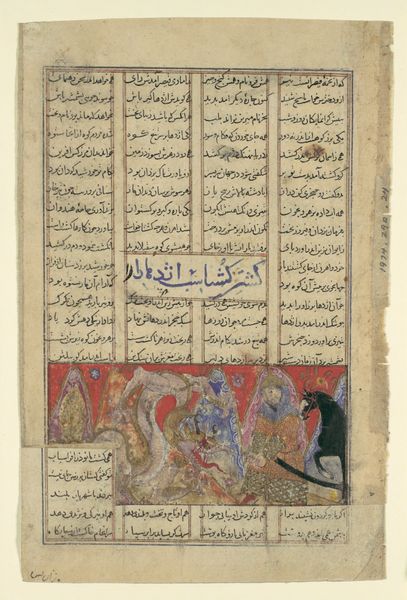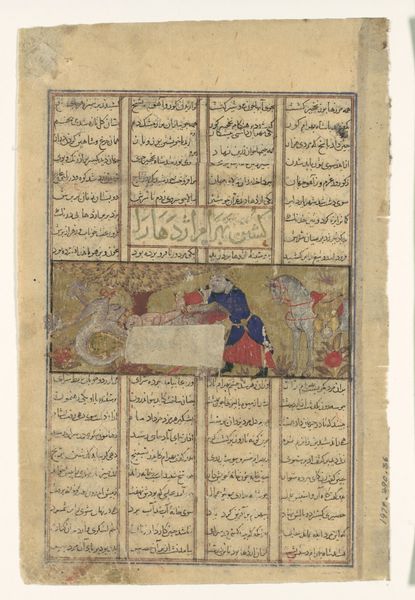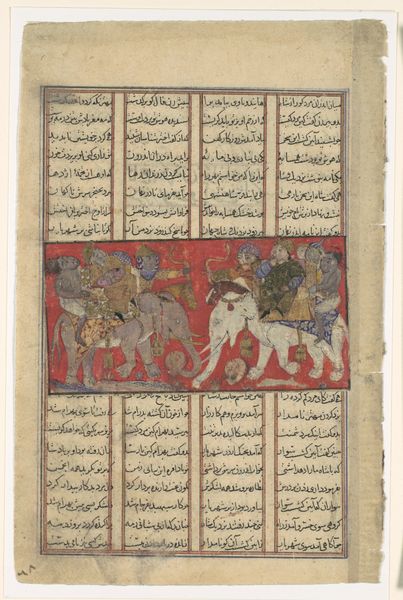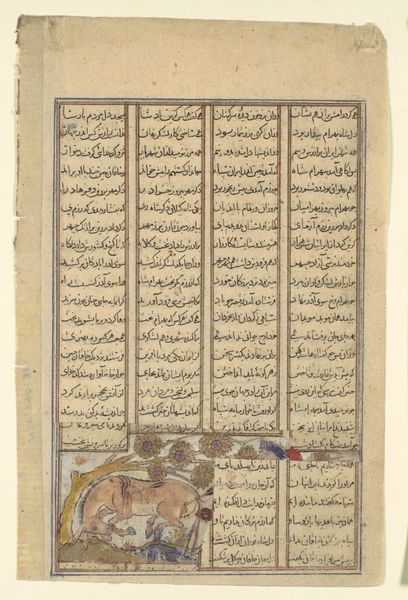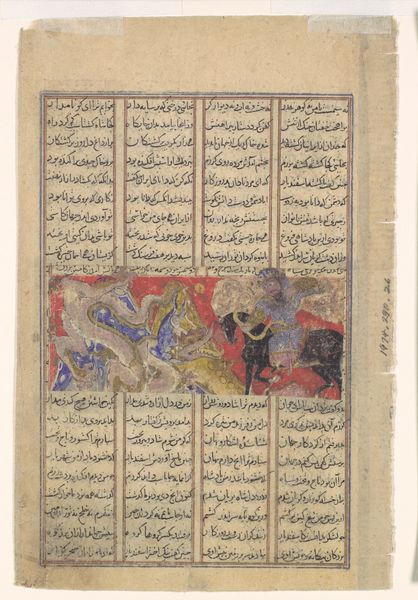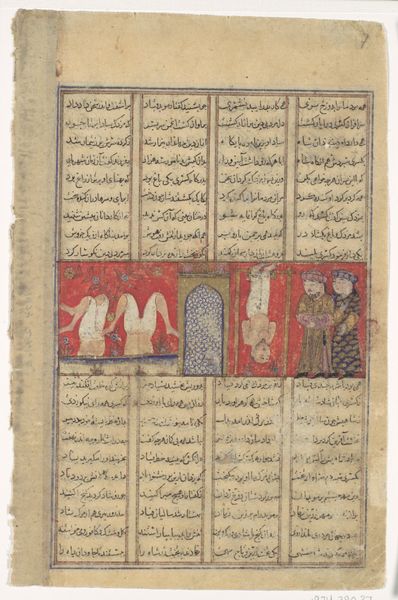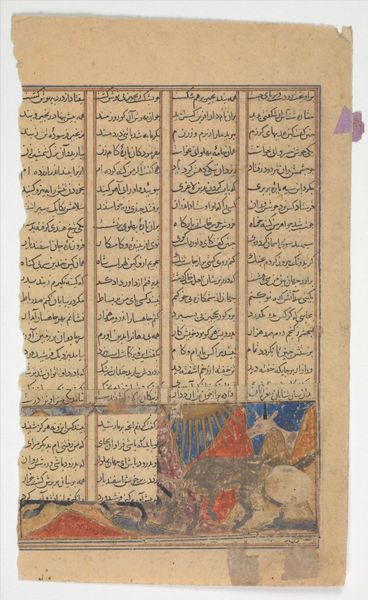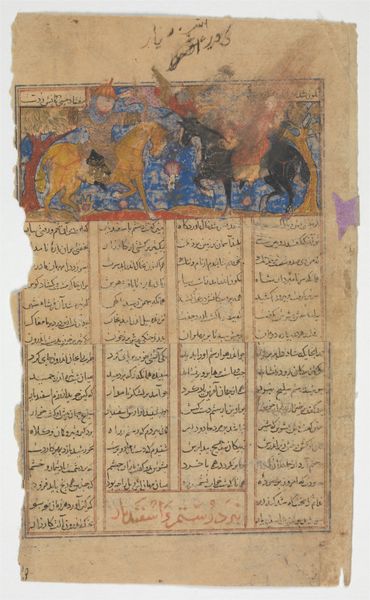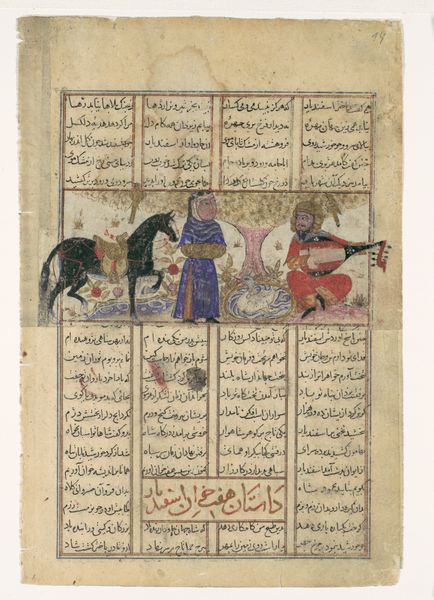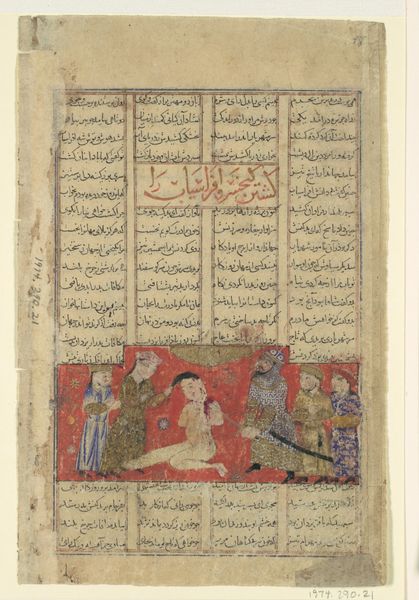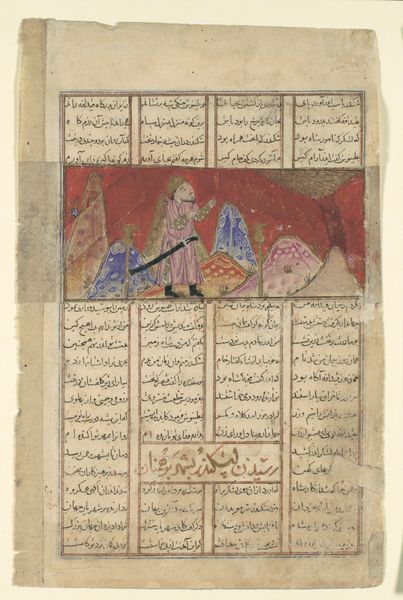
"Death of Bahram Chubina?", Folio from a Shahnama (Book of Kings) 1305 - 1365
0:00
0:00
painting, watercolor
#
medieval
#
narrative-art
#
painting
#
death
#
watercolor
#
islamic-art
#
miniature
Dimensions: H. 1 5/8 in. (4.2 cm) W. 4 5/16 in. (10.9 cm)
Copyright: Public Domain
Curator: We're looking today at "Death of Bahram Chubina?", a folio from a Shahnama, or Book of Kings. It was created sometime between 1305 and 1365, and is currently held at the Metropolitan Museum of Art. The primary materials employed were watercolor and ink. What strikes you about this work initially? Editor: Oh, a dramatic scene unfolding here! There’s a stark stillness—a hush after the battle, maybe? It feels very contained, intimate even, despite the grand narrative implications. It's also somewhat minimalist; the background focuses attention solely on the narrative's pivotal moments, without too much fussy detail. Curator: Absolutely. It’s important to note that the Shahnama is a hugely important text in Persian culture, an epic poem recounting the history of Persia from the creation of the world to the Islamic conquest in the 7th century. Folios like this were often commissioned by royal patrons to illustrate particularly dramatic episodes from the text. The visual iconography here, the dying hero, his attendants—each figure embodies a specific aspect of the larger story. Editor: It's the framing that really gets me. All that text boxing in the scene, above and below—it makes the visual narrative feel like a jewel, doesn't it? Like we're being given a precious glimpse into a legendary past. And I find that the use of color here is rather subtle. Those muted tones almost give it a faded memory kind of feeling. Curator: That’s perceptive. The text, indeed, functions both as a literal narrative component, but also, crucially, as a decorative element, structuring how the image is seen. The relatively limited palette of colors aligns perfectly with the symbolic needs, where narrative clarity trumps any overt naturalism. Notice how even in depicting death, the scene retains a composed, dignified air. Editor: It’s fascinating how the miniature format itself contributes to that dignity, isn’t it? Like death isn't some sprawling, chaotic mess but rather something refined, contemplated. Almost like a beautifully penned poem about death itself, crafted so elegantly, so intentionally... a controlled narrative. Curator: A thought-provoking analogy. Perhaps what we are truly witnessing here is less the brute fact of death, and more the cultural meaning of it. The death of a hero, recorded for posterity within a complex visual and textual language intended to inspire, to instruct, and to memorialize. Editor: I love that. It’s like this isn't just an illustration—it’s a little seed of cultural memory, blooming through the ages. Thanks for illuminating this. Curator: My pleasure. Thank you for sharing your astute perspective.
Comments
No comments
Be the first to comment and join the conversation on the ultimate creative platform.
